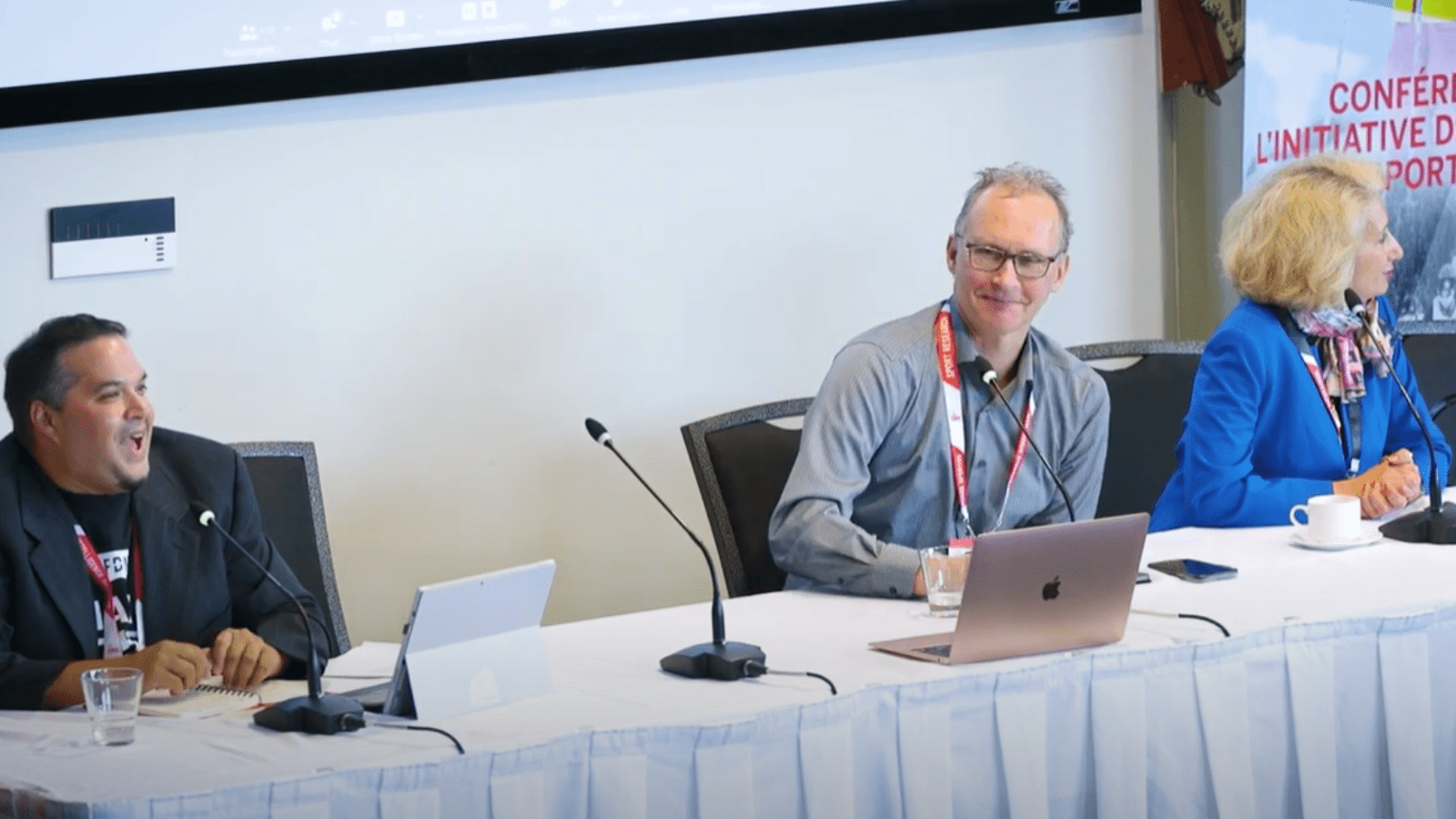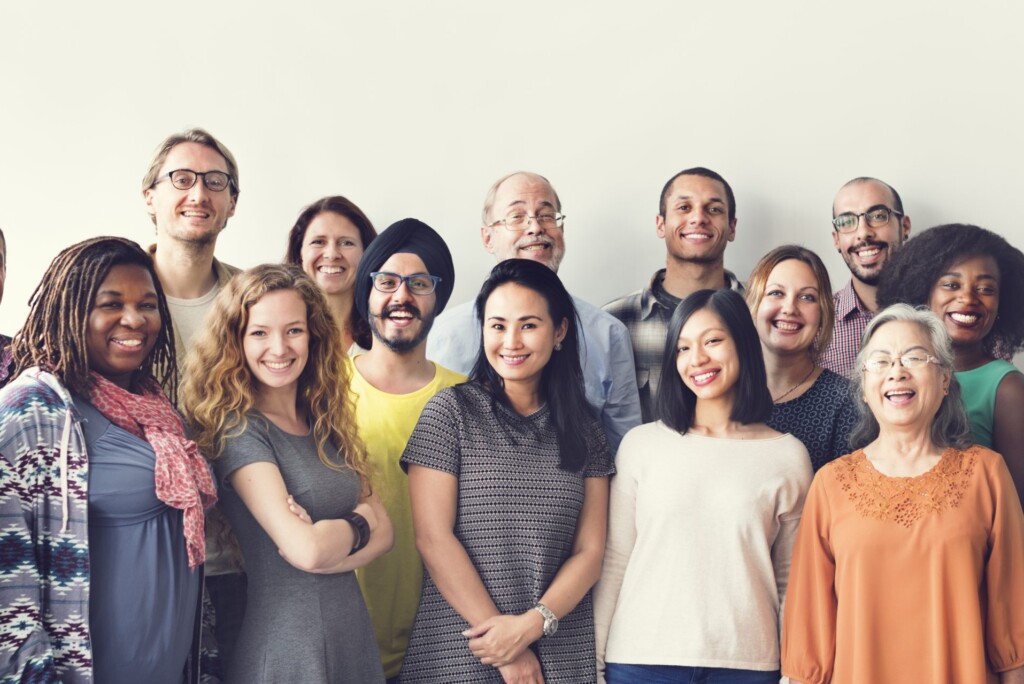Community Sport
Community sport plays a vital role in bringing people together, promoting physical health, and fostering social connections. Explore resources that support local programs, and encourage participation across all ages and abilities.
Search Community Sport Resources
Top 10 resources
- Policy Framework for Recreation in Canada
- Long Term Athlete Development Model
- SIRCuit Article: Leveling the playing field: Accessibility in youth basketball
- SIRC Article: Schools play a key role in supporting youth physical activity
- SIRCuit Article: Taking Action: Community Sport Organizations and Social Responsibility
- SCRI Panel: Trending topics in youth sport
- SIRCuit Article Building Capacity in Community Sport Organizations
- SIRCuit Article: Giving Due Deliberation to Masters Athletes: The Time has Come
- Power of Sport: The True Sport Report 2022
- SCRI Keynote: Punching above our weight – The balance is better journey of culture change in New Zealand Aotearoa

Featured resource
SIRC and Queen's University

Featured resource
Patti Millar, University of Windsor


Featured resource
University of Sherbrooke and SIRC
Quick Facts
What is community sport?
Community sport refers to organized physical activities that take place within a local community and are accessible to people of all ages, skill levels, and backgrounds. These activities are typically non-competitive or recreational and are designed to promote health, social interaction, and community engagement.
They are often organized by local clubs, schools, recreational centers, or community groups and can include a wide range of activities such as youth soccer leagues, adult basketball games, swimming lessons, and fitness classes. The focus is on participation, enjoyment, and fostering a sense of belonging within the community.
What are the benefits of participating in community sport?
The benefits that contribute to individual well-being, social cohesion, and overall community health include:
- Physical Health: Can improve cardiovascular health, enhances strength and endurance, and helps in maintaining a healthy weight.
- Mental Health: Can reduce stress, anxiety, and depression, and provide an opportunity for social interaction, which can improve mental well-being.
- Social Inclusion: Can foster a sense of belonging and inclusion by bringing together individuals from diverse backgrounds, building relationships and strengthening community bonds.
- Skill Development: Helps individuals develop physical skills, teamwork, leadership, and discipline, which can be beneficial in other areas of life.
- Youth Development: For young people, it can offer an outlet for energy, teaching important life skills, and providing positive role models.
- Community Engagement: Events and activities encourage volunteerism, local pride, and community spirit, contributing to a more connected and supportive community.
- Economic Benefits: Can boost local economies by attracting visitors, creating jobs, and promoting local businesses through events and activities.
How does community sport support youth development?
It plays a vital role in youth development by providing a structured environment for learning teamwork, discipline, leadership, and resilience. It also promotes healthy lifestyles and positive social interactions. Through regular participation, young people gain valuable life skills, build self-esteem, and develop a strong sense of community, which contributes to their overall growth and future success.
What is the Long-Term Athlete Development (LTAD) model?
The Long-Term Athlete Development (LTAD) framework is designed to guide the development of athletes from early childhood through to adulthood. It outlines specific stages to optimize training, competition, and recovery according to the age and development of the athlete. The stages are:
- Active Start
- FUNdamentals
- Learn to Train
- Train to Train
- Train to Compete
- Train to Win
- Active for Life
The LTAD ensures that athletes develop their skills and physical abilities at the appropriate pace, reducing the risk of burnout and injury. By emphasizing age-appropriate development and long-term progression, the LTAD model supports sustainable growth and peak performance in sports.
Video Resources
Ottawa Sport Council Concussion Education Video – August 2020
- Ottawa Sport Council, Parachute Canada, and SIRC
- 2020
Trick down effect? Exploring the influence of the Olympic Games on preschooler development and sport participation (part 2)
- York University, University of Toronto, University of Windsor, Own The Podium, Canadian Olympic Committee, and SIRC
- 2014
Promoting and assessing social learning in disability sport
- University of Ottawa and SIRC
- 2014
Exploring Developmental Factors for Overcoming Relative Age Effects in Ice Hockey
- University of Windsor and SIRC
- 2017
Officiating – Supporting Others
- Australian Sports Commission
Imagery Use in Children’s Leisure Time Physical Activities
- University of Windsor and SIRC
- 2013
Knowledge Nuggets
knowledge nuggets
Physical activity for cognitive function
Want to supercharge your focus? Take a quick run! A recent study shows that short activity breaks can sharply boost attention, making them a game
Want to supercharge your focus? Take a quick run! A recent study shows that short activity breaks can sharply boost attention, making them a game changer for staying sharp and engaged.
knowledge nuggets
Managing concussions in children
Recent Canadian research has shown that, at least in children, there is no difference in symptom recovery between sport-related and non-sport-related concussions, reinforcing the need
Recent Canadian research has shown that, at least in children, there is no difference in symptom recovery between sport-related and non-sport-related concussions, reinforcing the need for proper care for every concussion, no matter where or how it happens.
knowledge nuggets
Inactivity and health risks
In today’s digital era, it’s easy to overlook the importance of physical activity in our daily lives. New data from the WHO show that nearly
In today’s digital era, it’s easy to overlook the importance of physical activity in our daily lives. New data from the WHO show that nearly one third (31%) of adults worldwide did not meet the recommended levels of physical activity in 2022, increasing the risk of certain diseases and health conditions. However, nearly half of the world’s countries have made improvements over the past decade, with 22 countries identified as likely to reach the global target of reducing inactivity by 15% by 2030.
knowledge nuggets
Protein intake for masters athletes
According to a recent review, Masters athletes exhibit muscle characteristics, physiological responses to exercise, and protein metabolism comparable to younger athletes. Like their younger counterparts,
According to a recent review, Masters athletes exhibit muscle characteristics, physiological responses to exercise, and protein metabolism comparable to younger athletes. Like their younger counterparts, Masters athletes should prioritize adequate dietary protein intake in their nutrition plans to effectively support training demands and optimize recovery.
knowledge nuggets
Social identity and youth development in sport
A recent study reveals how sports shape youth development, particularly for those with limited family or peer support. Having a strong social identity formed through
A recent study reveals how sports shape youth development, particularly for those with limited family or peer support. Having a strong social identity formed through sports had the greatest impact on those with fewer resources. Creating supportive, community-driven environments and training coaches to encourage personal growth and athletic success is key to maximizing their potential on and off the field.
knowledge nuggets
Prioritizing masters sport in coach education
A recent study explored coach education directors’ perspectives on supporting lifelong sport participation through adult-oriented coaching development. Findings revealed a dominant focus on youth and
A recent study explored coach education directors’ perspectives on supporting lifelong sport participation through adult-oriented coaching development. Findings revealed a dominant focus on youth and high performance coaching, despite recognizing the unique needs of adult athletes. Based on the results of this study, there is a need to integrate Masters sport coaching into coach education programs to promote lifelong sport pathways.
knowledge nuggets
Strength training for children and youth
Parents often wonder whether strength training is safe for children and adolescents. Research shows that strength training can increase muscular fitness and bone mass, motor
Parents often wonder whether strength training is safe for children and adolescents. Research shows that strength training can increase muscular fitness and bone mass, motor development, and performance if done properly. Strength training is considered appropriate for children aged 6 years and older through training strategies using body weight and simple equipment with a focus on movement quality.
knowledge nuggets
How parents can help their child cope with getting “cut”
Deselection, or being “cut” from a team, can be tough for young competitive athletes. Parents can help their child cope with being cut from a
Deselection, or being “cut” from a team, can be tough for young competitive athletes. Parents can help their child cope with being cut from a team by being positive and using the “console first, talk later” rule. Allow your child time to process their emotions for 24 to 48 hours before talking to them about it.
More Community Sport Resources
|
|
|
|
|
|
|
|
|
|
|
|